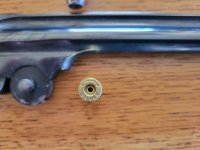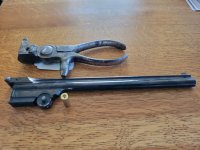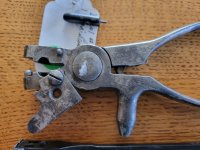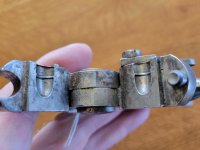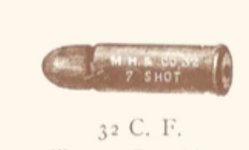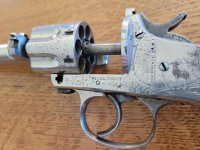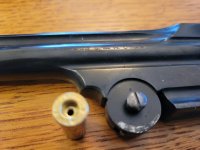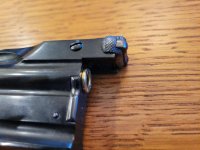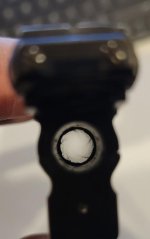Boulder350
Member
Here is a Model of 91 10" barrel chambered in the 32 H&R or 32 Merwin Hulbert Long cartridge. Looking to load some rounds for this unique cartridge.
I went the rounds originally trying to figure out what cartridge this barrel was chambered for. The 32 S&W Long was just a tad to long. The gun would close but took some force to do so. Found out that the 32 H&R cartridge came out in 1887 with an case length of about .890", a perfect fit for the barrel. Merwin and Hulbert also offered the same round and called it the 32 Merwin and Hulbert Long. Both rounds were designed for the larger 38 frame and cylinder, but were chambered for a 32 cal round.
I finally found an Ideal reloading tool #1 first variation from the late 1880' s with a de-priming pin in 32 H&R. What loads would you recommend for this round? I could go with a reduced black powder change and seat the bullet deep within the case like the 32-44 round. For the brass I bought some 32 H&R cases and trimmed them down to .890". Don't want to load to the 32 S&W long pressures in this old girl.
I went the rounds originally trying to figure out what cartridge this barrel was chambered for. The 32 S&W Long was just a tad to long. The gun would close but took some force to do so. Found out that the 32 H&R cartridge came out in 1887 with an case length of about .890", a perfect fit for the barrel. Merwin and Hulbert also offered the same round and called it the 32 Merwin and Hulbert Long. Both rounds were designed for the larger 38 frame and cylinder, but were chambered for a 32 cal round.
I finally found an Ideal reloading tool #1 first variation from the late 1880' s with a de-priming pin in 32 H&R. What loads would you recommend for this round? I could go with a reduced black powder change and seat the bullet deep within the case like the 32-44 round. For the brass I bought some 32 H&R cases and trimmed them down to .890". Don't want to load to the 32 S&W long pressures in this old girl.

